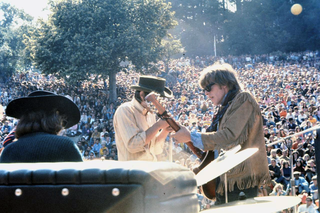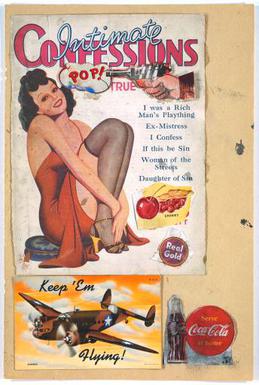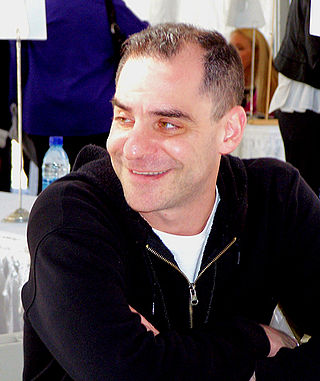
The Summer of Love was a major social phenomenon that occurred in San Francisco during the summer of 1967. As many as 100,000 people, mostly young people, hippies, beatniks, and 1960s counterculture figures, converged in San Francisco's Haight-Ashbury district and Golden Gate Park. More broadly, the Summer of Love encompassed hippie culture, spiritual awakening, hallucinogenic drugs, anti-war sentiment, and free love throughout the West Coast of the United States, and as far away as New York City. An episode of the PBS documentary series American Experience referred to the Summer of Love as "the largest migration of young people in the history of America".

Psychedelia usually refers to a style or aesthetic that is resembled in the psychedelic subculture of the 1960s and the psychedelic experience produced by certain psychoactive substances. This includes psychedelic art, psychedelic music and style of dress during that era. This was primarily generated by people who used psychedelic drugs such as LSD, mescaline and psilocybin and also non-users who were participants and aficionados of this subculture. Psychedelic art and music typically recreate or reflect the experience of altered consciousness. Psychedelic art uses highly distorted, surreal visuals, bright colors and full spectrums and animation to evoke, convey, or enhance the psychedelic experience.

A hippie, also spelled hippy, especially in British English, is someone associated with the counterculture of the 1960s, originally a youth movement that began in the United States during or around 1964, and spread to different countries around the world. The word hippie came from hipster and was used to describe beatniks who moved into New York City's Greenwich Village, San Francisco's Haight-Ashbury district, and Chicago's Old Town community. The term hippie was used in print by San Francisco writer Michael Fallon, helping popularize use of the term in the media, although the tag was seen elsewhere earlier.

Pop art is an art movement that emerged in the United Kingdom and the United States during the mid- to late-1950s. The movement presented a challenge to traditions of fine art by including imagery from popular and mass culture, such as advertising, comic books and mundane mass-produced objects. One of its aims is to use images of popular culture in art, emphasizing the banal or kitschy elements of any culture, most often through the use of irony. It is also associated with the artists' use of mechanical means of reproduction or rendering techniques. In pop art, material is sometimes visually removed from its known context, isolated, or combined with unrelated material.
A happening is a performance, event, or situation art, usually as performance art. The term was first used by Allan Kaprow during the 1950s to describe a range of art-related events.

Joey Skaggs is an American multi-media artist, activist, satirist, educator and prankster. Skaggs is one of the originators of the phenomenon known as culture jamming.In a career spanning six decades, he has produced paintings, sculptures, guerrilla theater, performance art, socially revealing hoaxes, media pranks, and films.

Yayoi Kusama is a Japanese contemporary artist who works primarily in sculpture and installation, and is also active in painting, performance, video art, fashion, poetry, fiction, and other arts. Her work is based in conceptual art and shows some attributes of feminism, minimalism, surrealism, Art Brut, pop art, and abstract expressionism, and is infused with autobiographical, psychological, and sexual content. She has been acknowledged as one of the most important living artists to come out of Japan, the world's top-selling female artist, and the world's most successful living artist. Her work influenced that of her contemporaries, including Andy Warhol and Claes Oldenburg.

Flower power was a slogan used during the late 1960s and early 1970s as a symbol of passive resistance and nonviolence. It is rooted in the opposition movement to the Vietnam War. The expression was coined by the American Beat poet Allen Ginsberg in 1965 as a means to transform war protests into peaceful affirmative spectacles. Hippies embraced the symbolism by dressing in clothing with embroidered flowers and vibrant colors, wearing flowers in their hair, and distributing flowers to the public, becoming known as flower children. The term later became generalized as a modern reference to the hippie movement and the so-called counterculture of drugs, psychedelic music, psychedelic art and social permissiveness.

The freak scene was originally a component of the bohemian subculture which began in California in the mid-1960s, associated with the hippie movement. The term is also used to refer to the post-hippie and pre-punk period of the early to mid-1970s. It can be viewed as encompassing a range of disparate groups including hippies, pacifists, politicized radicals, as well as psychedelic and progressive rock fans. Those connected with the subculture often attended rock festivals, free festivals, happenings, and alternative society gatherings of various kinds.
In film, nudity may be either graphic or suggestive, such as when a person appears to be naked but is covered by a sheet. Since the birth of film, depictions of any form of sexuality have been controversial, and in the case of most nude scenes, had to be justified as part of the story.

David Benjamin Rakoff was a Canadian-born American writer of prose and poetry based in New York City, who wrote humorous and sometimes autobiographical non-fiction essays. Rakoff was an essayist, journalist, and actor, and a regular contributor to WBEZ's This American Life. Rakoff described himself as a "New York writer" who also happened to be a "Canadian writer", a "mega Jewish writer", a "gay writer", and an "East Asian Studies major who has forgotten most of his Japanese" writer.

Arnold Roth is an American cartoonist and illustrator for advertisements, album covers, books, magazines, and newspapers. Novelist John Updike wrote, "All cartoonists are geniuses, but Arnold Roth is especially so."

The Exotic Erotic Ball was held annually from 1979 to 2009 on a weekend, usually before Halloween night, in the San Francisco Bay Area, California and was a public, adult-themed event. Over three decades, the annual indoor event was attended by nearly half a million people since its inception with steadily increasing growth in attendance each year until 2010, when the event was cancelled due to poor ticket sales and cost overruns. The 2011 ball was never planned. Due to the worldwide popularity of the event the City of San Francisco issued three proclamations for “Exotic Erotic Ball Day,” twice by Mayor Willie Brown in 1999 and again in 2001, and once by Mayor Gavin Newsom in 2004.
The 10th Street galleries was a collective term for the co-operative galleries that operated mainly in the East Village on the east side of Manhattan, in New York City in the 1950s and 1960s. The galleries were artist run and generally operated on very low budgets, often without any staff. Some artists became members of more than one gallery. The 10th Street galleries were an avant-garde alternative to the Madison Avenue and 57th Street galleries that were both conservative and highly selective.
The hippie subculture began its development as a youth movement in the United States during the early 1960s and then developed around the world.

A love-in is a peaceful public gathering focused on meditation, love, music, sex and/or use of recreational drugs. The term was coined by Los Angeles radio comedian Peter Bergman, creator of comedy group The Firesign Theater, who also hosted the first such event on Easter, 26 March 1967 in Elysian Park.

Revolution is a documentary film by Jack O'Connell made in San Francisco in 1967. It was subsequently revived with added reminiscences.

Samuel Adams Green was an American art curator and director, most associated with his promotion of American pop art, particularly the early works of his friend Andy Warhol.
Donald Roger Snyder was an American photographer and multimedia artist. Immersed in the social upheaval of the 1960s, he is best known for his iconic photographs of the counterculture, collected in his 1979 book Aquarian Odyssey: A Photographic Trip into the Sixties.
Reiko Tomii is a Japanese-born art historian and curator based in New York. Specializing in Japanese modern and conceptual art in its global context during the postwar period, Tomii is one of the art historians publishing in the English language on postwar Japanese art. Tomii helped organize the first North American retrospective on the work of Yayoi Kusama (1989), and collaborated closely with curator Alexandra Munroe to produce the seminal exhibition and book Japanese Art after 1945: Scream Against the Sky (1994). In 2017, Tomii's book Radicalism in the Wilderness: International Contemporaneity and 1960s Art in Japan was awarded the Robert Motherwell Book Award by the Dedalus Foundation. Tomii is also co-founder and co-director of the postwar Japanese art research collective PoNJA-GenKon.














